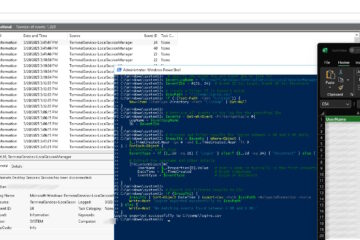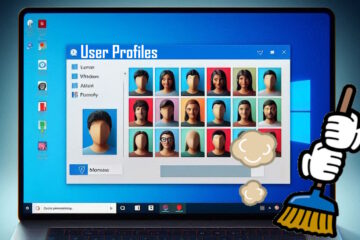If you RDP (remote desktop) to a Windows 7 or 8 PC and see only a black screen the computers involved appear to be arguing over screen resolution. The easy way to resolve it is to:
- Click on the black RDP windows (to select it) and press CTRL-ALT-END to bring up the Windows Security screen and select LOG OFF, then log back in
- Start a new RDP client on your desktop but BEFORE you click CONNECT, click the SHOW OPTIONS link, click the DISPLAY tab and set the DISPLAY CONFIGURATION to a low resolution like 640×480
To actually solve the problem in the future:
- Disable BitMap Caching in your RDP client (on the EXPERIENCE tab).
- You can use THIS process to reduce the RDP compression to none.
For more details see, THIS Microsoft KBase article or THIS blog.
For the record, I like the phrase BLACK SCREEN OF DOOM that has been coined by others.


39 Comments
Mitesh · May 5, 2020 at 2:35 am
Thanks! i got it to work by reducing the resolution in RDC man and then connecting to the server.
Volkan Turhan · January 11, 2020 at 6:30 am
thank you
Sindhu · August 12, 2019 at 12:29 am
Hey thanks for it. It worked like a pro
Bob Slob · October 12, 2018 at 10:46 am
PS C:\> invoke-command -computer BigSlobBobzServer01 {Net localgroup Users Interactive /add}
The command completed successfully.
PS C:\> invoke-command -computer BigSlobBobzServer01 {Net localgroup Users “Authenticated Users” /add}
The command completed successfully.
Thanh · October 1, 2018 at 9:45 am
It works for me, just click Ctrl+Alt+End , everything show
yousifco · July 26, 2018 at 12:31 am
Perfect 5 stars
Dimitri · March 15, 2017 at 3:13 pm
That worked a treat!
lawrence · January 3, 2017 at 4:15 pm
thank you very much for this infomation it has helped to bring back my rdp to live
tfk · January 12, 2016 at 2:38 am
this has been giving me problems FOR MONTHS AND MONTHS. Yes it appears that if the remote PC is logged in then the black screen will nearly always happen. so completely log out REMOTELY first (Not sure if the ‘switched user-to-login-screen is sufficient’)
windows10 seems the same issue. Is it disable PERSISTENT bitmap caching for win10?
yes ctrl-alt-END must only be done by someone at the remote PC
Ian Matthews · January 25, 2016 at 9:39 pm
This is a problem with only intermittent solutions for me. I see the problem with some regularity and these solutions are the best I have to date.
Thirupal · December 30, 2015 at 4:54 am
Fentastic solution
Ticoloco · December 24, 2015 at 4:41 am
UAC. UAC is the problem. That bullshit, yes. In my case the first login was successful and working, but any other consecutive attempt was not working. I was getting either a flickering(unusable) or completely black screen, on RDP or directly on the console of the 2012 R2 server. In the Application eventlogs there were lots of errors with eventID 1000(Faulting application name: explorer.exe, version: 6.3.9600.17415, time stamp: 0x54503a3a
Faulting module name: unknown).
UAC was disabled. I just enabled it, reboot the server, and then I was able to log in with multiple working sessions. I even disabled back UAC and reboot the server again and things were working normally. Beware of UAC
blake · October 28, 2015 at 12:15 pm
You just saved me an embarrassing email to my boss. You sir are my hero
Morossimo · October 26, 2015 at 5:24 am
Right, Ctrl+alt+End didn’t help.
I will try Ctrl+Alt+Esc.
Well, it seems that simply multiple clicks on the right button mouse do the job too.
Thx !
tim · October 6, 2015 at 11:57 am
This has helped. Ctrl+alt+End didn’t help, but the other handy shortcut Ctrl+Alt+Esc sure did. Maybe that’s a typo.